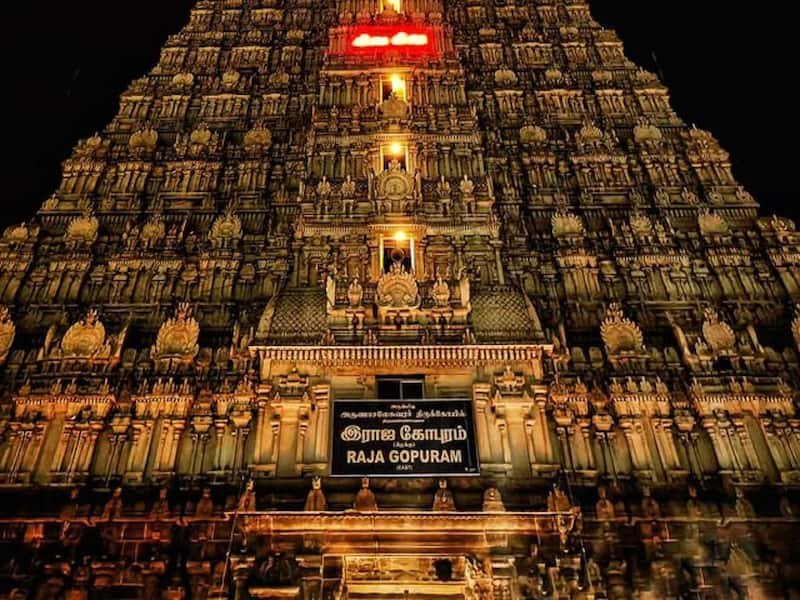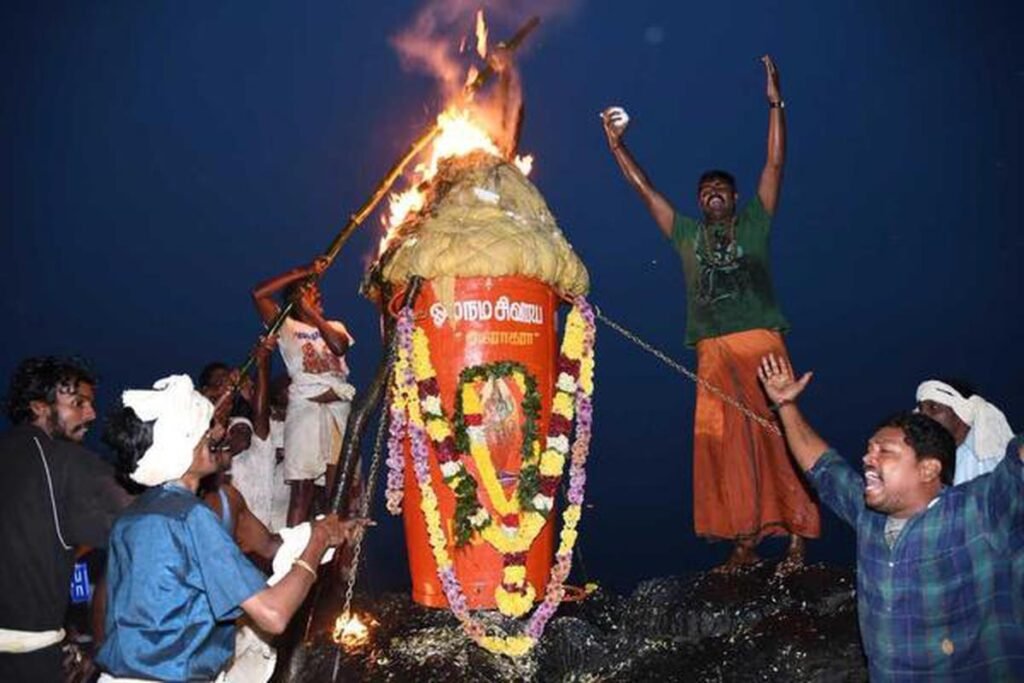The Sacred Flame of Tiruvannamalai:
A Deep Dive into the History of Karthigai Deepam Every year, in the quiet temple town of Tiruvannamalai, Tamil Nadu, something extraordinary happens. As the full moon of the Tamil month Karthigai rises in the sky, a massive flame is lit atop the sacred Arunachala Hill—a flame so bright, it can be seen for miles. This is the Karthigai Maha Deepam, one of the most spiritually powerful and historically rich festivals in South India. But what makes this event so special? Let’s explore the fascinating history behind it.

A Flame Born from Legend:
The origins of the Tiruvannamalai Deepam go back to ancient Hindu mythology. It all started with a cosmic argument between Brahma, the creator, and Vishnu, the protector, over who was the most supreme. To settle the dispute, Lord Shiva appeared as a limitless pillar of fire, challenging them to find the beginning or end of His form.
Vishnu took the form of a boar and dug deep into the earth. Brahma flew upwards as a swan. But neither could find the start or finish of Shiva’s form—realizing that divine truth is beyond human understanding. This moment is what the Maha Deepam represents: Shiva as the eternal flame, the source of all light and life.
A Festival Rooted in Ancient Tamil Culture:
The Karthigai Deepam isn’t just a myth—it’s a tradition that dates back thousands of years. Tamil literature, including works by saints like Manickavachakar, celebrates this festival with great devotion. Historical records from the Chola and Pallava dynasties also mention large-scale celebrations and temple rituals centered around the Deepam.
The Arunachaleswarar Temple, one of the grandest Shiva temples in India, plays a central role. Over ten days, the temple hosts rituals, processions, and celebrations leading up to the lighting of the Maha Deepam.

The Lighting of the Maha Deepam:
The highlight of the festival is the Maha Deepam, lit on the night of Karthigai Pournami. A huge cauldron filled with ghee and camphor is carried to the summit of Arunachala Hill—which stands about 2,668 feet high. Precisely at dusk, as the evening star appears, the flame is lit, symbolizing Shiva’s infinite light.
The moment is breath taking. As the flame blazes atop the hill, hundreds of thousands of devotees across the region light oil lamps (deepams) in their homes, creating a sea of light that glows with faith and devotion.
The Spiritual Journey: Girivalam
No Deepam celebration is complete without the Girivalam—a 14-kilometer barefoot walk around the Arunachala Hill. It is believed that walking this sacred path on Deepam night cleanses karma and brings spiritual blessings.
For many, this is more than a religious practice—it’s a personal pilgrimage. People from all walks of life, from sages and sadhus to techies and travelers, come together in silent reverence or joyous chanting.
Ancient Light in a Modern World:
In today’s fast-paced world, the Tiruvannamalai Deepam stands as a symbol of timeless spirituality. Despite modern influences, the rituals have remained unchanged, carried forward by generations of temple priests and local communities.
The festival now draws global attention, with spiritual seekers from around the world visiting Tiruvannamalai, home to the revered sage Sri Ramana Maharshi, who considered the Arunachala Hill itself to be Shiva in physical form.

Why It Still Matters:
At its heart, the Deepam festival is about light triumphing over darkness, both in the world and within ourselves. It’s about humility in the face of the divine, and the eternal human longing to connect with something greater. Whether you’re a believer, a traveler, or simply someone curious about world cultures, the story of the Tiruvannamalai Deepam reminds us that the oldest traditions often carry the deepest truths.
So, next time you see a single flame flickering in the dark, remember the sacred fire burning on the Arunachala Hill—and the millions of hearts it continues to illuminate.